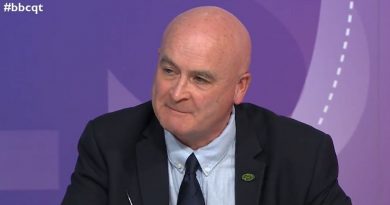Colorado election: 9 races to watch on Congress, affordable housing, more
If you’re planning to keep score of election results at home next week, set aside plenty of paper.
Colorado voters are set to decide the fate of 11 ballot measures covering affordable housing, school meals, liquor sales and psilocybin therapy. The state’s four statewide constitutional officers are up for re-election, along with a U.S. Senate race and eight Congressional districts. Then there’s the 17 state Senate and 65 House seats up, plus the down-ballot races for the state board of ed and CU regency.
The results could help determine who controls Congress, with a new Congressional seat up for grabs. New state programs could be authorized or nixed, the income tax left alone or trimmed. Republicans hope to pick up seats in the local legislature and reverse some Democrats’ gains over the past four years.
Here are 10 contests to watch Tuesday night:
CD-8: Kirkmeyer vs. Caraveo
Colorado’s new congressional district, which covers Adams and Weld counties and stretches from Greeley to Thornton, officially has a slight Democratic lean. But it’s long been considered a toss up, and recent projections — and Republican confidence — have tilted toward Republican Barbara Kirkmeyer, a state senator from Brighton, over Democrat Yadira Caraveo, a pediatrician and state House representative from Thornton. Against a backdrop of broader Republican hopes of a conservative electoral boom, CD-8 will likely help decide which party controls the U.S. House of Representatives and by how much.
The race has been contentious: Kirkmeyer has hammered Democrats’ handling of the fentanyl crisis — at times inaccurately — and the two candidates have sparred over abortion (Caraveo is pro-abortion access, whereas Kirkmeyer is anti-abortion, with limited exceptions). Both have emphasized cost-of-living challenges.
Proposition 123: Affordable housing funding
Amid everything else on their ballots, voters are also tasked with voting on an affordable housing measure for the first time in the state’s history. Prop 123 would dedicate roughly $300 million in income tax revenue each year going forward to support a stable of housing programs, from eviction defense to investments and homeownership programs.
If successful, the measure would help address a key issue for the state, but it would also leave it on the hook for the program going forward. That, in turn, could take a dent out of residents’ TABOR refunds. There’s little argument that housing affordability is a major problem in Colorado, and $300 million would launch a number of programs aimed to address it. But will Coloradans back it?
CD-7: Pettersen vs. Aadland
The other closely watched Colorado congressional race has been CD-7, between Democratic State Sen. Brittany Pettersen and Republican challenger Erik Aadland. Held currently by the retiring Ed Perlmutter, Cook Political Report gives Democrats and Pettersen, who has made addressing substance use a cornerstone of her legislative career, the edge.
State Senate District 8: Roberts vs. Solomon
After Sen. Kevin Priola flipped his party affiliation from Republican to Democrat in August, Republican hopes of retaking the Senate took a blow. The GOP now must pick up every seat they think is available to take control of the chamber.
State Senate District 8, a Democrat-leaning district in northwest Colorado, is one of them. Democrat Dylan Roberts, a House member, has outspent Republican Matt Solomon, a former Eagle City council member, twice over, and he’s raised just over $320,000 — a significant sum for a state legislative seat.
House District 18: Snyder vs. Black
Part of a whole-scale legislative turnover in El Paso County, HD-18 was rated by the redistricting committee as tighter than any other district in the state. It’s got a negligible Democrat tilt based on several recent elections. Democrat Marc Snyder, the incumbent, faces off with Republican Shana Black, an attorney, in a race in which he’s raised more than $150,000 — seven times more than his opponent.
Senate District 3: Varela vs. Hinrichsen
Democrat Nick Hinrichsen was appointed to the Pueblo seat earlier this year after then-Senate President Leroy Garcia took a job in the Pentagon. Its status as a Democrat-leaning district hasn’t dampened Republican confidence that a red wave will whisk Stephen Varela to the Capitol. Unlike some other tight legislative races, fundraising figures are roughly comparable between the two, a sign of either party’s confidence in winning it.
House District 26: Wolfson vs. Lukens
The northwestern Colorado district left open by Roberts was redistricted to be more competitive than before, sliding it into Republican hopes in a midterm cycle. It still leans Democrat, but Republicans are bullish on Savannah Wolfson. Democrat Meghan Lukens holds a serious money edge, having outspent Wolfson two to one.
State Senate District 11: Exum vs. Hisey
The fight for the El Paso County seat pits Republican Dennis Hisey, a sitting senator redrawn into the district, against Democrat Tony Exum, a House member ending his fourth term in the chamber. Nearly $275,000 has been spent on the race for a seat given a slight Democratic edge by the redistricting committee.
House District 61: Woolever vs. Hamrick
After Snyder’s seat in El Paso County, HD-61 in southeast metro Denver is rated by the redistricting committee as the most competitive House seat in the state. It pits two educators — Democrat Eliza Hamrick, the teacher, against Republican Dave Woolever, the college professor, in a suburban fight. As is typical for Democrats, Hamrick holds a fundraising lead, having spent $121,800 to Woolever’s $35,800.
Proposition FF: School meals for all
Proposition FF — if passed — would make Colorado one of the few states in the country to provide school meals to all students, regardless of family income. It’d extend a pandemic-era program and help students and families both, advocates say. It would cost just north of $100 million annually, money the state would raise by capping the amount in tax deductions wealthier Coloradans can claim each year. That’d affected about 5% of filers. Roughly 40% of students in the state qualify for free meals.
Source: Read Full Article


